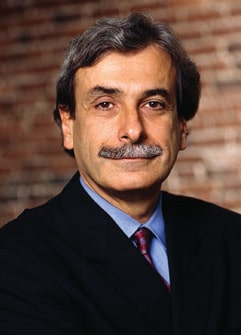The Massachusetts economy has performed very well in 2017. Recent GDP growth is almost twice that of the national average. Compared to the rest of the U.S., our wage growth is faster and unemployment is lower. Current signs point to continued steady growth through 2018, so barring a dramatic economic downturn, the outlook is positive.
Looking ahead to 2018, we have to ask, “What are those things that drive our region’s national leadership, and how are we going to sustain them?” If we in business, government, academia and policy-making capacities can apply real understanding of the factors that make Massachusetts so successful right now, can we maintain growth and build in resilience for the inevitable slowdowns.
The innovation economy has kept Massachusetts in the lead during this long recovery. Innovation is fueling growth today in businesses of all sizes, from startups to Fortune 500 companies. Becoming the nation’s center for innovation takes a more complex strategy, however, than single moves like enacting an investment tax policy or funding a public initiative. Those are happening all over the country. We need to work along multiple paths to foster an innovation ecosystem in which investment, recruitment, planning, education, policy and infrastructure all play a systemic role encouraging and enabling innovation of all kinds, from new technologies to new business processes.
We have successful models: the ecosystem that is Kendall Square makes East Cambridge a place where creative collisions take place among businesses of all kinds, encouraging new kinds of partnerships. For example, life science, data and technology companies are harnessing each other’s unique expertise in novel co-creation of new therapies and devices. Nearby, we see incubators for early-stage ideas and accelerators for entrepreneurial development. This is designing a region for innovation in a larger sense than designing buildings or traditional master planning.
Housing, Resiliency Move To Front Burner
Two issues to watch in 2018 in Boston are bellwethers for this kind of coordination. They address long-term issues large enough to sustain growth or seriously hamper it.
The first is housing. The high cost of housing here has been a chronic worry for employers, especially in technology firms that rely on an influx of smart, relatively young talent. Boston Mayor Marty Walsh has been proactive in putting together a more focused approach to the problem with a plan to produce 53,000 new units of housing by 2030. Renewed attention to public transit improvements can ease the pressure young workers feel in a high-rent environment and is very much a housing issue.
Our incredible education system means our incoming population is young and talented and interested in technology. You might assume we need a lot of studios and one-bedrooms to house them, especially because their wages are high compared to peers around the U.S., so they can afford our high rents.
But look a little closer: Fifteen years ago, developers were reluctant to build three-bedroom apartments because they were expensive and seemed limited to families. What happened instead is those three-bedroom apartments became extremely attractive in today’s marketplace because they’re attracting unrelated singles who move easily in a sharing economy. They aren’t demanding so much permanent private space.
This invites us to change our thinking: Instead of modeling housing design on “this many square feet for a one-bedroom and that many for a two-bedroom,” let’s imagine housing on a cost-per-bed basis, which can lead to more physically shared and even time-shared space.
The second initiative that excites me for 2018 is how the city is moving on plans to protect our waterfronts from potentially catastrophic consequences of global warming. Climate scientists predict we’re going to have a lot more powerful storms, and storm surge is becoming a critical design and planning issue. Superstorm Sandy cost more than $70 billion along the coasts of New Jersey and New York in 2012, mostly due to its tremendous storm surge. In Houston, we learned what happens when a lot of rainwater has no place to go. I’m very encouraged by the initiative envisioned in October’s coastal resilience report because it orients the city toward a neighborhood approach, as opposed to a building-by-building approach, to designing a resilient waterfront. The design and construction innovations are moving beyond protecting infrastructure like transformers and waste treatment plants and thinking about neighborhoods and even the city as a whole. Some of the features – open space, mobility and connectivity, elevated pathways – fit well with the principles of designing for innovation that I mentioned above. That kind of holistic thinking can address the housing and mobility issues as well as physical resilience, making Boston that much more attractive to global talent.
The word “innovation” occurred 99 times in Boston’s RFP to Amazon for its HQ2 project. It sums up why our economy has done so well in 2017 and points the way to sustaining growth in 2018.
David Manfredi is CEO and founding principal of Elkus Manfredi Architects.




 |
| 




